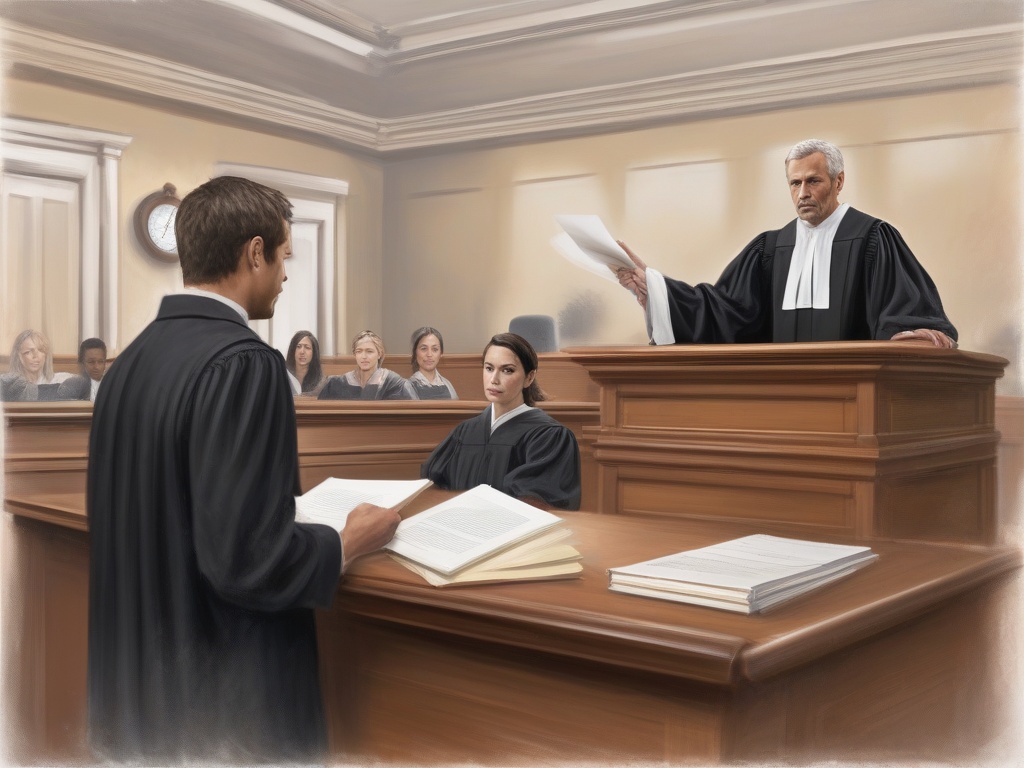Mastering the Art of Self-Defense: Strategies to Outwit Your Opponent in Small Claims Court
Entering the courtroom armed with comprehensive knowledge and meticulous preparation is your first step toward effective self-defense. Understanding the specific procedures, legal standards, and common pitfalls in small claims court can significantly tilt the odds in your favor. Research relevant laws and statutes that pertain to your case, and gather all necessary documentation, evidence, and witness testimonies that support your position. Remember, being well-informed not only boosts your confidence but also demonstrates credibility and seriousness to the judge.
One of the most impressive tactics in small claims court is the ability to anticipate your opponent’s strategies and counter them effectively. Approach the case analytically by scrutinizing their claims for inconsistencies, gaps, or lack of evidence. Engage in a process of careful cross-examination, where you challenge the credibility and validity of their assertions without appearing aggressive. This approach allows you to expose weaknesses in their case and highlight your own strengths, positioning you as a formidable and rational advocate for yourself. Remember, the goal is not just to defend but to outwit through precision, clarity, and confidence.
Building an Ironclad Defense: Crafting Evidence and Arguments that Win Battles
To construct a defense that truly stands firm, meticulous gathering of evidence is paramount. This involves more than just collecting documents; it requires a strategic approach to assembling a comprehensive case. Prioritize obtaining clear, original copies of contracts, receipts, or communication records that directly support your position. Photographs, videos, and expert reports can serve as powerful visual or technical proof, reinforcing your narrative with undeniable clarity. Remember, the strength of your evidence is often measured by its relevance, authenticity, and the ability to withstand scrutiny. Well-organized, easily accessible evidence not only streamlines your presentation but also demonstrates your dedication to truth and fairness, making your case more compelling to the judge.
Once your evidence is securely in place, transforming it into a persuasive argument is crucial. Effective advocacy in small claims court hinges on your ability to weave facts into a coherent story that resonates emotionally and logically. Highlight the inconsistencies or gaps in your opponent’s claims while emphasizing the validity and strength of your evidence. Use clear, concise language and avoid jargon to make your points accessible and convincing. The goal is to present a narrative that not only addresses legal standards but also appeals to the judge’s sense of fairness and reasonableness. A well-crafted argument demonstrates your credibility, shifts the focus from mere facts to a compelling story, and ultimately increases your chances of winning the case.
Navigating the Legal Battlefield: Expert Tips to Turn the Courtroom in Your Favor
Stepping into the small claims courtroom is akin to entering a battlefield where precision, strategy, and confidence determine the outcome. To truly turn the tide in your favor, it’s imperative to adopt a mindset of meticulous planning and tactical execution. First and foremost, understand that the courtroom is a venue where your ability to communicate clearly and present your case convincingly can outweigh the strength of your opponent’s claims. This requires more than just gathering evidence; it demands a strategic approach to courtroom demeanor, timing, and presentation that can disrupt your opponent’s narrative and bolster your credibility.
Expert advocates emphasize the importance of mastering courtroom etiquette and understanding the formal procedures that govern small claims trials. From knowing when to speak to how to address the judge, every action should reflect professionalism and preparedness. Being articulate and succinct ensures your points resonate clearly, making it easier for the judge to comprehend and favor your position. Additionally, recognizing the cues of the opposing party—such as inconsistencies in their story or hesitations—can provide opportunities for effective rebuttal and for casting doubt on their claims, thereby shifting the balance of power in your favor.
Timing is critical in court; knowing when to introduce your strongest evidence or to challenge an opponent’s statement can significantly influence the outcome. This is where an understanding of courtroom rhythm and psychological tactics comes into play. For instance, presenting key evidence after your opponent has made a damaging statement can maximize its impact. Similarly, countering their arguments with well-timed questions can expose flaws and create doubt. Skilled litigants often prepare opening statements that outline their main points, allowing them to steer the narrative and set the tone for persuasive argumentation. Using persuasive language that appeals to fairness while backing claims with solid evidence can sway the judge’s perception and tilt the case in your favor.
While courtroom combat centers on facts and evidence, savvy litigants also leverage procedural nuances to strengthen their position. This involves a thorough understanding of local rules, deadlines, and procedural rights that can be used to challenge the admissibility of evidence or to delay proceedings if needed. For example, knowing how to object to improperly obtained evidence or asserting procedural violations can cause delays or undermine the opposing party’s case. Additionally, identifying and exploiting weaknesses in the opponent’s documentation or testimony—such as inconsistencies or lack of authenticity—can be decisive. The key is to approach the courtroom as a strategic battlefield where every procedural and evidentiary advantage is meticulously exploited to turn the court’s favor towards your objectives.

